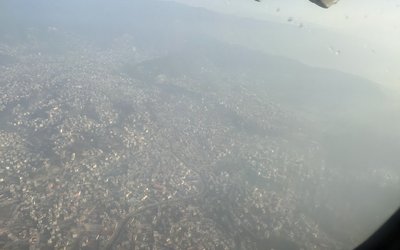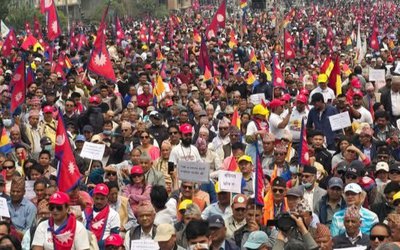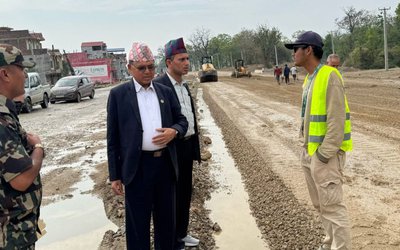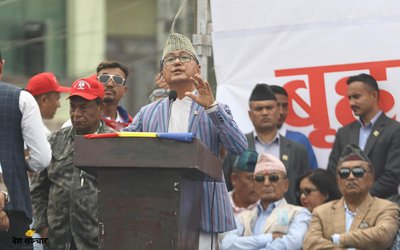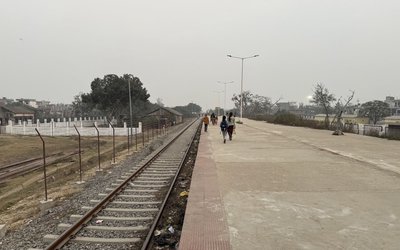
The current natural disaster of Nepal will live for a long time in the hearts and minds of everyone present during the disaster and not just the Nepali people. Everyone knew from Geologists to Jyotishies that the major natural disaster in the form of an earthquake was somewhere around the corner. But the Geologists and Jyotishies could not precisely predict its time, location and the magnitude of its destruction. Quite similarly the current news is that a major magnitude is due for the Western half of Nepal but again the time, the exact location and its magnitude are something that remain a mystery for everyone.
As a consequence of recent events, the Ministry of Urban Development and Ministry Federal Affairs have agreed to set stringent rules and regulations regarding building construction. It was agreed they would monitor the pre-process of construction, during construction and follow this up with post construction monitoring. Such processes are totally stupendous since they consume a lot of resources namely human, financial and time-related. Besides, our immediate challenges remain, our protracted issues have not ‘yet’ been resolved. They include some of the challenges not highlighted by environmentalists, development practitioners, and our central planning commission members. They have not only undermined our nation’s development success but also of our religion that has deep rooted ethics in environment conservation. The underlying challenge of urban environment, urban infrastructure and migration (rural to urban) has remains a protracted challenge no one dares to address.
I believe a country specific nexus should be developed which can address such protracted challenges. The interrelated and interdependent core challenges that are in a chain, in addition, also provide some resolution to the tertiary issues. Sure Water, Energy and Food Nexus is a global challenge for all the nations, and also a ‘poster boy’ (if you will) to understand Nexus, however a Nexus which is country specific has not been developed by anyone. In light of our current natural disaster, maybe this article would provide a food for thought before the next ‘one’ hits us.
This model, much like a Nexus, works in identifying the relationship of one to the other components. Therefore in order for us to address the challenges of our urban environment we have to deal with our internal migration, followed by urban infrastructure. We have not been able to provide safe drinking water, hygiene and sanitation services to all of our permanent residences, how can we provide the same for migrants (that are temporary)? If we find solutions towards reducing the rural-urban migration especially via increased agriculture productivity and employment in the rural sector we will also better address the underlying challenges of urban infrastructure. This would include providing better infrastructure in rural areas whereby agriculture can significantly contribute to employment. Additionally if every rural citizen had access to quality basic services e.g. education, water, hygiene and health, there would be no reason to migrate but for tourism purposes. With the influx of migrants and remittance investments to urban centers in the recent decade we have seen a negative impact in our social infrastructure, where in order to provide services for both (urban dwellers and migrants) the education, water, hygiene and health facilities services have been decimated. A study by the University of Sussex Research Programme Consortium found out how migration coupled with remittance was impacting our urban centers. The workers for this study were put into three categories: those who worked for infrastructure projects undertaken by international firms (type1), national firms who implemented road construction projects (type2) and small scale housing projects by private developers (type3). The study found that 6.8 percent of type1, 12.2 percent of type2 and 14 percent of type3 had their investments from remittance in purchasing or mortgaging land.
When we take a look at the percentage of people who invested their remittance in home improvements projects, we will better understand why we had such a devastation from the recent natural disaster. The study revealed that 52.3 percent (type1), 53.6 (type2) and 62 percent (type3) had invested their remittance in such projects. By design most of the home we build have no less than 5-6 floors, where the home owner occupies a floor or two and the rest are for tenants. The building codes are not well regarded and our institutions, like the Urban Development Ministry, are too lazy to say anything. The repercussion of building large number of unplanned homes can be seen in our urban environment. Where our rivers are dying, we have air and noise pollution, and visually Kathmandu has been rendered one of the filthiest cities of this planet!
Urban land has been one of the most valuable natural resources as we have seen through our unplanned construction. With the recent natural disaster; since most of the building are stuck to each other in addition to countless high rises, there are very few places like parks where we can stay safe. Moreover our social infrastructure like parks, and medical facility are few and have not been able to provide basic quality services to all its citizens. Thus we saw how overwhelmed our social infrastructures were during the recent disaster that struck Nepal.
Increased number of parks, and environment friendly medical facilities can provide quality care; clean and efficient urban transportation will further complement them. This is a conceptual framework which provides some suggestions for policy makers. If we can undertake activities to develop specific Nexuses perhaps we could arrive at a solution much quicker.
Nirendra Basnet
He is studying in Asian Institute of Technology. He can be reached at nirendra1.basnett@gmail.com
- Can Dustbins Provide Progress?
- Aug 13, 2017
- The underlying contests of large Hydropower Dams
- Jun 25, 2017
- Springs and Ponds – Viable solutions to the water crisis
- Dec 13, 2013
- Nepal’s Alarming and Unsustainable Fossil Fuel Addiction
- Apr 14, 2013
